20 july 2015
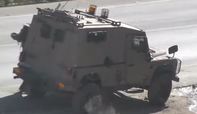
Israeli soldiers invaded, on Monday evening, the town of Beit Ummar, north of the southern West Bank city of Hebron, and clashed with local youths; one child was shot with a rubber-coated metal bullet, while many residents suffered the effects of tear gas inhalation.
Media spokesperson of the Popular Committee against the Wall and Settlements in Beit Ummar Mohammad Awad, said clashes took place close to the Karmie Tzur illegal colony, built on Palestinian lands.
The soldiers then invaded the ath-Thaher area, and Somoud Mosque area, and fired dozens of gas bombs in addition to rubber-coated metal bullets.
One child was shot with a rubber-coated metal bullet in his leg, while scores of residents received treatment for the effects of tear gas inhalation, especially after the soldiers deliberately targeted several homes.
Media spokesperson of the Popular Committee against the Wall and Settlements in Beit Ummar Mohammad Awad, said clashes took place close to the Karmie Tzur illegal colony, built on Palestinian lands.
The soldiers then invaded the ath-Thaher area, and Somoud Mosque area, and fired dozens of gas bombs in addition to rubber-coated metal bullets.
One child was shot with a rubber-coated metal bullet in his leg, while scores of residents received treatment for the effects of tear gas inhalation, especially after the soldiers deliberately targeted several homes.
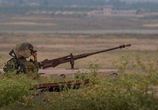
Israeli soldiers fired, on Monday morning, rounds of live ammunition, on a number of Palestinian farmers and homes, east of Gaza City.
Media sources said soldiers, stationed on military towers across the border fence east of the Zeitoun neighborhood, targeted farmlands and several homes.
The attack caused property damage but no injuries, while the farmers had to leave their lands, fearing additional Israeli military fire.
The army frequently attacks farmers and lands, close to the border fence, in the northern and eastern parts of the Gaza Strip, in addition to ongoing attacks against Palestinian fishers, and their boats, in Gaza territorial waters.
Media sources said soldiers, stationed on military towers across the border fence east of the Zeitoun neighborhood, targeted farmlands and several homes.
The attack caused property damage but no injuries, while the farmers had to leave their lands, fearing additional Israeli military fire.
The army frequently attacks farmers and lands, close to the border fence, in the northern and eastern parts of the Gaza Strip, in addition to ongoing attacks against Palestinian fishers, and their boats, in Gaza territorial waters.
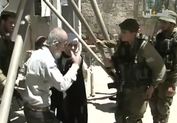
Several Palestinians suffered the effects of teargas inhalation, earlier on Monday, during clashes that took place after Israeli soldiers invaded Beit Ummar town, north of the southern West Bank city of Hebron. Soldiers also searched homes, kidnapped one Palestinian.
Rateb Jabour, media spokesperson of the Popular Committee against the Wall and Settlements in Beit Ummar town, said the several army vehicles invaded the al-Batn area, and clashed with local youths.
Jabour added that several residents suffered the effects of teargas inhalation, and received treatment by local medics.
The soldiers also invaded a home, belonging to resident Suleiman Ali Mohammad Abu Ayyash, before searching and ransacking his property.
In addition, soldiers installed a roadblock on the main entrance of Beit Ummar, stopped and searched dozens of cars while examining the ID cards of the passengers and kidnapped one Palestinian identified as Salah al-‘Allami, 28 years of age.
The kidnapped Palestinian was moved to a military base, near the Karmie Tzur illegal settlement, built on Palestinian lands, south of Beit Ummar.
The soldiers also handed Khalil Abu Mariya, 28 years of age, a military order for interrogation in the Gush Etzion base, and detained several Palestinians while searching their cars and inspecting their ID cards.
In addition, troops installed a number of roadblocks on the main entrances of Sa’ir and Halhoul towns, north of Hebron, also searched cars while inspecting the ID cards of the passengers.
Rateb Jabour, media spokesperson of the Popular Committee against the Wall and Settlements in Beit Ummar town, said the several army vehicles invaded the al-Batn area, and clashed with local youths.
Jabour added that several residents suffered the effects of teargas inhalation, and received treatment by local medics.
The soldiers also invaded a home, belonging to resident Suleiman Ali Mohammad Abu Ayyash, before searching and ransacking his property.
In addition, soldiers installed a roadblock on the main entrance of Beit Ummar, stopped and searched dozens of cars while examining the ID cards of the passengers and kidnapped one Palestinian identified as Salah al-‘Allami, 28 years of age.
The kidnapped Palestinian was moved to a military base, near the Karmie Tzur illegal settlement, built on Palestinian lands, south of Beit Ummar.
The soldiers also handed Khalil Abu Mariya, 28 years of age, a military order for interrogation in the Gush Etzion base, and detained several Palestinians while searching their cars and inspecting their ID cards.
In addition, troops installed a number of roadblocks on the main entrances of Sa’ir and Halhoul towns, north of Hebron, also searched cars while inspecting the ID cards of the passengers.
19 july 2015
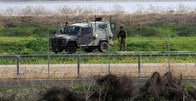
The Israeli occupation forces (IOF) on Saturday afternoon opened machinegun fire at Palestinian farmers east of the Gaza Strip, with no reported casualties.
Local sources told Quds Press that Israeli border troops posted near the security fence opened fire intensively at Palestinian farmers and their homes to the east of al-Maghazi refugee camp in central Gaza.
They added that several drones were seen overflying the area while there were unusual military movements along the eastern border with Gaza.
Local sources told Quds Press that Israeli border troops posted near the security fence opened fire intensively at Palestinian farmers and their homes to the east of al-Maghazi refugee camp in central Gaza.
They added that several drones were seen overflying the area while there were unusual military movements along the eastern border with Gaza.
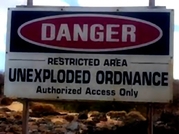
Palestinian explosives' engineering police, Saturday, defused an unexploded device left behind by Israeli army in the village of Romaneh to the west of Jenin, according to security sources.
Sources informed WAFA that that explosives' engineering police managed to deactivate an explosive device after receiving calls by local residents about the presence of an explosive device in the area.
The Israeli army usually conducts drills in the occupied West Bank, especially in the Jordan Valley, after forcefully displacing dozens of local Palestinian families due to the proximity of their homes to the training sites.
Palestinians living in these areas have to also worry about unexploded ordnance left behind by the Israeli army after the drills, which have led to the death of many Palestinians, including children, over the past years.
In 2014, three Palestinians were killed by unexploded ordnance left by Israeli forces in the West Bank's Jordan Valley, while Gaza remains plagued with unexploded ordnance following the most recent Israeli aggression.
OCHA Protection of Civilian report, reporting period: 30 September – 13 October 2014, said that, “On 22 October 2014, a four-year-old child was killed when a [unexploded ordnance] UXO exploded east of Beit Hanoun, Gaza.
“The presence of unexploded ordnance (UXOs) continues to pose a high risk to civilians, particularly children. Following the July-August hostilities, the risk of UXO and Explosive Remnants of War (ERW) became significantly high.”
It reported that, “Since the ceasefires on 26 August, five Palestinians have been killed in UXO incidents, and six others injured.”
Sources informed WAFA that that explosives' engineering police managed to deactivate an explosive device after receiving calls by local residents about the presence of an explosive device in the area.
The Israeli army usually conducts drills in the occupied West Bank, especially in the Jordan Valley, after forcefully displacing dozens of local Palestinian families due to the proximity of their homes to the training sites.
Palestinians living in these areas have to also worry about unexploded ordnance left behind by the Israeli army after the drills, which have led to the death of many Palestinians, including children, over the past years.
In 2014, three Palestinians were killed by unexploded ordnance left by Israeli forces in the West Bank's Jordan Valley, while Gaza remains plagued with unexploded ordnance following the most recent Israeli aggression.
OCHA Protection of Civilian report, reporting period: 30 September – 13 October 2014, said that, “On 22 October 2014, a four-year-old child was killed when a [unexploded ordnance] UXO exploded east of Beit Hanoun, Gaza.
“The presence of unexploded ordnance (UXOs) continues to pose a high risk to civilians, particularly children. Following the July-August hostilities, the risk of UXO and Explosive Remnants of War (ERW) became significantly high.”
It reported that, “Since the ceasefires on 26 August, five Palestinians have been killed in UXO incidents, and six others injured.”
18 july 2015
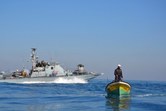
The Israeli occupation navy early Sunday morning opened heavy machinegun fire on Palestinian fishing boats despite sailing within the unilaterally designated fishing zone.
Local sources said an Israeli warship attacked Palestinian fishing vessels sailing in northern Gaza sea, forcing the fishermen to leave for fear of being killed.
The attack is another chain in the series of Israeli infringements of the Cairo-brokered ceasefire accord signed on August 26.
Local sources said an Israeli warship attacked Palestinian fishing vessels sailing in northern Gaza sea, forcing the fishermen to leave for fear of being killed.
The attack is another chain in the series of Israeli infringements of the Cairo-brokered ceasefire accord signed on August 26.
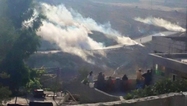
Israeli soldiers attacked, on Friday, the weekly nonviolent protest against the Annexation Wall and settlements in Nabi Saleh village, northwest of the central West Bank city of Ramallah, and kidnapped one teenager.
Nabi Saleh television reported that the soldiers kidnapped Walid Dhifallah, 18 years of age, and took him to an unknown destination.
The army attacked the weekly protest and fired several rounds of live ammunition, in addition to rubber-coated metal bullets and tear gas bombs.
Soldiers also attacked the weekly protest in the al-Ma’sara village, in the West Bank district of Bethlehem, and assaulted the villagers and their supporters at village entrance and, then, forced them back using rifle butts and batons; no injuries were reported.
Also on Friday, the soldiers attacked the weekly nonviolent protest in Bil’in, near Ramallah.
One Palestinian was shot with a live round, after the soldiers attacked the weekly protest in Kufur Qaddoum, in the northern West Bank district of Qalqilia.
Army Shoots Two, Kidnaps Three
Israeli forces, late Friday, shot and injured two Palestinians; one was shot in Gaza and the other to the east of Qalqilia.
Meanwhile, dozens suffocated as Israeli forces violently suppressed two peaceful demonstrations in West Bank, according to WAFA correspondence.
Israeli army stationed at borderline military watchtowers opened gunfire at a Palestinian youth, injuring him the foot.
He was transferred to hospital for treatment where his condition was described as moderate.
Meanwhile, a Palestinian youth was also shot and injured late Friday as Israeli forces quelled a peaceful demonstration to the east of Qalqilia in protest of the Israeli wall and settlements, while dozens suffocated due to inhaling tear gas fired at them by the Israeli army.
The youth was transferred to hospital after being shot with live ammunition in his arm, where his medical condition was described as moderate.
In the meantime, dozens of Palestinians suffered from excessive tear gas suffocation during clashes with Israeli army in the village of Bilin to the west of Ramallah, after the latter violently suppressed a similar peaceful demonstration.
Furthermore, fire broke out in Palestinian-owned land after tear gas canisters, which were fired by the army towards demonstrators, exploded near the scene of the clashes.
Israeli troops routinely open fire at Palestinian farmers and other civilians if they approach borderline lands. Israel has unilaterally declared a buffer zone extending between 500 meters and 1500 meters into the Strip, effectively turning local farms into no-go zones.
According to a United Nations’ OCHA, 17 percent of Gaza's total land area and 35 percent of its agricultural land lie within the buffer zone as of 2010, directly affecting the lives and livelihoods of more than 100,000 Gaza residents.
“Israeli forces’ use of live ammunition has placed up to 35 percent of Gaza’s agricultural land off-limits to farmers,' it said.
Attacks by Israeli military and navy on farmers and fishermen come despite the signing of a ceasefire deal between Israel and the Palestinian factions on August 26 2014. The deal was supposed to put an end to all kinds of hostilities, however, multiple breaches by Israel have been reported.
According to Human Rights Watch (HRW), The Israeli military has issued directives prohibiting any Palestinian presence on land within Gaza abutting the territory’s perimeter fence, currently up to 300 meters from the fence, but Israeli forces have frequently shot at Palestinians beyond that distance.
According to UN figures Israeli military forces have killed four and wounded more than 60 civilians near the perimeter fence with Gaza since the beginning of 2014.
Human Rights Watch investigated seven incidents between January 2 and March 1 2014, in which Israeli forces shot civilians in the vicinity of the fence; Four were killed, including a high school student on a picnic and a woman with an intellectual disability who was lost.
Five others were wounded, including two journalists and two demonstrators planting olive trees, none of whom posed a threat to the soldiers or others, said HRW.
The Israeli military has not claimed that any of the victims in the seven cases were engaged in military operations or that armed groups were in the area when the shooting occurred, said HRW.
'Month after month, Israeli forces have wounded and killed unarmed Palestinians who did nothing but cross an invisible, shifting line that Israel has drawn inside Gaza's perimeter,' said Sarah Leah Whitson, HRW's Middle East director.
“It’s appalling that soldiers have shot men, women, and children apparently for simply crossing a line,” Said Whitson.
“Shooting at civilians is not a lawful policy near Gaza’s perimeter fence or anywhere else,” Whitson said. “Israeli commanders need to change their policies and practices to abide by international law, not flaunt it.”
Under international human rights law, “lethal force may only be used when strictly necessary to prevent an imminent threat to life. Israeli soldiers do not face an imminent lethal threat from unarmed Palestinian civilians in areas of Gaza near the perimeter fence.”
“In violation of international humanitarian law (or the laws of war) which prohibits attacks on civilians, Israeli soldiers have repeatedly shot at civilians near the fence on the Palestinian side.”
HRW noted that under the laws of war, attacks may only be directed at military objectives, such as enemy combatants.
“Forces must do everything feasible to verify that targets are military objectives, and if there is doubt, must cancel the attack. While civilians who take a direct part in hostilities are subject to attack, merely entering a prohibited area does not meet that requirement. Military personnel who willfully kill civilians are committing a war crime.”
HRW noted that the economy of the Gaza Strip has been severely harmed by Israel’s and Egypt’s border closures, with unemployment at almost 40 percent and more than 70 percent of the population receiving humanitarian assistance.
Israel has imposed a tightened blockade since 2007 after Hamas won the democratic legislative elections and took over power in the strip.
Also late Friday, as Palestinians marked the first day of Eid, abducted three Palestinians near the village of Jaba’ to the east of Jerusalem, according to local sources.
Sources told WAFA that forces arrested three Palestinians at a flying checkpoint while they were on their way back home. Forces further confiscated their car.
They were identified as Sa’eb Abahreh, 28, Fadi, 25, and Yasir Jarrar, 28.
The Israeli authorities have kidnapped 1545 Palestinians since the beginning of 2015 year, reported Abdel Nasser Ferwana the director of the Bureau of Statistics in the commission of detainees' affairs.
The rate of arrests since January till April is 9.6% which exceeds the rate documented for the same period last year, said Ferwana.
A total of 258 Palestinian under the age of 18 are among the arrested in addition to 77 Palestinians women, the statement reported.
Nabi Saleh television reported that the soldiers kidnapped Walid Dhifallah, 18 years of age, and took him to an unknown destination.
The army attacked the weekly protest and fired several rounds of live ammunition, in addition to rubber-coated metal bullets and tear gas bombs.
Soldiers also attacked the weekly protest in the al-Ma’sara village, in the West Bank district of Bethlehem, and assaulted the villagers and their supporters at village entrance and, then, forced them back using rifle butts and batons; no injuries were reported.
Also on Friday, the soldiers attacked the weekly nonviolent protest in Bil’in, near Ramallah.
One Palestinian was shot with a live round, after the soldiers attacked the weekly protest in Kufur Qaddoum, in the northern West Bank district of Qalqilia.
Army Shoots Two, Kidnaps Three
Israeli forces, late Friday, shot and injured two Palestinians; one was shot in Gaza and the other to the east of Qalqilia.
Meanwhile, dozens suffocated as Israeli forces violently suppressed two peaceful demonstrations in West Bank, according to WAFA correspondence.
Israeli army stationed at borderline military watchtowers opened gunfire at a Palestinian youth, injuring him the foot.
He was transferred to hospital for treatment where his condition was described as moderate.
Meanwhile, a Palestinian youth was also shot and injured late Friday as Israeli forces quelled a peaceful demonstration to the east of Qalqilia in protest of the Israeli wall and settlements, while dozens suffocated due to inhaling tear gas fired at them by the Israeli army.
The youth was transferred to hospital after being shot with live ammunition in his arm, where his medical condition was described as moderate.
In the meantime, dozens of Palestinians suffered from excessive tear gas suffocation during clashes with Israeli army in the village of Bilin to the west of Ramallah, after the latter violently suppressed a similar peaceful demonstration.
Furthermore, fire broke out in Palestinian-owned land after tear gas canisters, which were fired by the army towards demonstrators, exploded near the scene of the clashes.
Israeli troops routinely open fire at Palestinian farmers and other civilians if they approach borderline lands. Israel has unilaterally declared a buffer zone extending between 500 meters and 1500 meters into the Strip, effectively turning local farms into no-go zones.
According to a United Nations’ OCHA, 17 percent of Gaza's total land area and 35 percent of its agricultural land lie within the buffer zone as of 2010, directly affecting the lives and livelihoods of more than 100,000 Gaza residents.
“Israeli forces’ use of live ammunition has placed up to 35 percent of Gaza’s agricultural land off-limits to farmers,' it said.
Attacks by Israeli military and navy on farmers and fishermen come despite the signing of a ceasefire deal between Israel and the Palestinian factions on August 26 2014. The deal was supposed to put an end to all kinds of hostilities, however, multiple breaches by Israel have been reported.
According to Human Rights Watch (HRW), The Israeli military has issued directives prohibiting any Palestinian presence on land within Gaza abutting the territory’s perimeter fence, currently up to 300 meters from the fence, but Israeli forces have frequently shot at Palestinians beyond that distance.
According to UN figures Israeli military forces have killed four and wounded more than 60 civilians near the perimeter fence with Gaza since the beginning of 2014.
Human Rights Watch investigated seven incidents between January 2 and March 1 2014, in which Israeli forces shot civilians in the vicinity of the fence; Four were killed, including a high school student on a picnic and a woman with an intellectual disability who was lost.
Five others were wounded, including two journalists and two demonstrators planting olive trees, none of whom posed a threat to the soldiers or others, said HRW.
The Israeli military has not claimed that any of the victims in the seven cases were engaged in military operations or that armed groups were in the area when the shooting occurred, said HRW.
'Month after month, Israeli forces have wounded and killed unarmed Palestinians who did nothing but cross an invisible, shifting line that Israel has drawn inside Gaza's perimeter,' said Sarah Leah Whitson, HRW's Middle East director.
“It’s appalling that soldiers have shot men, women, and children apparently for simply crossing a line,” Said Whitson.
“Shooting at civilians is not a lawful policy near Gaza’s perimeter fence or anywhere else,” Whitson said. “Israeli commanders need to change their policies and practices to abide by international law, not flaunt it.”
Under international human rights law, “lethal force may only be used when strictly necessary to prevent an imminent threat to life. Israeli soldiers do not face an imminent lethal threat from unarmed Palestinian civilians in areas of Gaza near the perimeter fence.”
“In violation of international humanitarian law (or the laws of war) which prohibits attacks on civilians, Israeli soldiers have repeatedly shot at civilians near the fence on the Palestinian side.”
HRW noted that under the laws of war, attacks may only be directed at military objectives, such as enemy combatants.
“Forces must do everything feasible to verify that targets are military objectives, and if there is doubt, must cancel the attack. While civilians who take a direct part in hostilities are subject to attack, merely entering a prohibited area does not meet that requirement. Military personnel who willfully kill civilians are committing a war crime.”
HRW noted that the economy of the Gaza Strip has been severely harmed by Israel’s and Egypt’s border closures, with unemployment at almost 40 percent and more than 70 percent of the population receiving humanitarian assistance.
Israel has imposed a tightened blockade since 2007 after Hamas won the democratic legislative elections and took over power in the strip.
Also late Friday, as Palestinians marked the first day of Eid, abducted three Palestinians near the village of Jaba’ to the east of Jerusalem, according to local sources.
Sources told WAFA that forces arrested three Palestinians at a flying checkpoint while they were on their way back home. Forces further confiscated their car.
They were identified as Sa’eb Abahreh, 28, Fadi, 25, and Yasir Jarrar, 28.
The Israeli authorities have kidnapped 1545 Palestinians since the beginning of 2015 year, reported Abdel Nasser Ferwana the director of the Bureau of Statistics in the commission of detainees' affairs.
The rate of arrests since January till April is 9.6% which exceeds the rate documented for the same period last year, said Ferwana.
A total of 258 Palestinian under the age of 18 are among the arrested in addition to 77 Palestinians women, the statement reported.
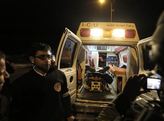
Palestinian medical sources have reported that a child was shot, and injured, by Israeli army fire in Abasan al-Kobra town, in the southern Gaza Strip district of Khan Younis.
The sources said Mansour Abu T’eima, 14 years of age, suffered a gunshot injury in his left leg.
He was moved to the Gaza European Hospital, suffering a moderate but stable injury.
The child was playing in an area close to the border fence when the soldiers opened fire on him and his friends.
The soldiers frequently target Palestinians, including farmers and workers, in lands close to the “Security Fence,” across the border with the coastal region.
The sources said Mansour Abu T’eima, 14 years of age, suffered a gunshot injury in his left leg.
He was moved to the Gaza European Hospital, suffering a moderate but stable injury.
The child was playing in an area close to the border fence when the soldiers opened fire on him and his friends.
The soldiers frequently target Palestinians, including farmers and workers, in lands close to the “Security Fence,” across the border with the coastal region.
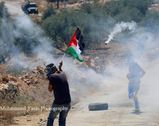
Many protesters have been injured, while orchards caught fire, on Friday, after Israeli soldiers assaulted the weekly nonviolent protest against the illegal Annexation Wall and settlements, in Bil’in village, west of the central West Bank city of Ramallah.
The villagers, accompanied by Israeli and international peace activists, marched from the center of the village, chanting against the Israeli occupation and its ongoing violations against the Palestinian people and their lands.
The soldiers fired dozens of gas bombs causing many protesters to suffer the effects of tear gas inhalation.
Today marks the first day of the al-Fitr Muslim feast; the Popular Committee against the Wall and Settlements in Bil’in issued a press release stating that the Palestinians will never abandon their legitimate struggle for liberation and independence.
“Our feast is the day of our liberation,” the Committee added.
The Popular Committee also said that many trees, including olive trees, belonging to resident Mahmoud Yassin, caught fire after the soldiers fired scores of gas bombs and concussion grenades into them.
The villagers, accompanied by Israeli and international peace activists, marched from the center of the village, chanting against the Israeli occupation and its ongoing violations against the Palestinian people and their lands.
The soldiers fired dozens of gas bombs causing many protesters to suffer the effects of tear gas inhalation.
Today marks the first day of the al-Fitr Muslim feast; the Popular Committee against the Wall and Settlements in Bil’in issued a press release stating that the Palestinians will never abandon their legitimate struggle for liberation and independence.
“Our feast is the day of our liberation,” the Committee added.
The Popular Committee also said that many trees, including olive trees, belonging to resident Mahmoud Yassin, caught fire after the soldiers fired scores of gas bombs and concussion grenades into them.

Israeli soldiers attacked, Friday, the weekly nonviolent protest against the Wall and settlements, in Kufur Qaddoum village, in the northern West Bank district of Qalqilia, leading to clashes with local youths; one Palestinian was shot with a live round in the back.
The Popular Committee against the Wall and Settlements in Kufur Qaddoum said the protesters marched demanding the army to reopen the main road of the village, which has been blockaded for the thirteenth consecutive year.
The Committee added that the soldiers were hiding in a nearby olive orchard, and started firing live rounds, wounding Hekmat Mahmoud Eshteiwy, 38 years of age, in his back. Medical sources said the bullet exited from his right arm, but did not cause a serious bodily harm.
Clashes then took place between the soldiers and local youths, who hurled stones and empty bottles on the army.
The soldiers fired gas bombs, rubber-coated metal bullets and several rounds of live ammunition; local youths burnt tires in an attempt to prevent the soldiers from advancing into their village.
Morad Eshteiwy, coordinator of the Popular Committee in Kufur Qaddoum, said the residents marched following evening prayers on the first day of the al-Fitr Muslim feast, and headed towards the gate the blockades their village’s main road.
The Popular Committee against the Wall and Settlements in Kufur Qaddoum said the protesters marched demanding the army to reopen the main road of the village, which has been blockaded for the thirteenth consecutive year.
The Committee added that the soldiers were hiding in a nearby olive orchard, and started firing live rounds, wounding Hekmat Mahmoud Eshteiwy, 38 years of age, in his back. Medical sources said the bullet exited from his right arm, but did not cause a serious bodily harm.
Clashes then took place between the soldiers and local youths, who hurled stones and empty bottles on the army.
The soldiers fired gas bombs, rubber-coated metal bullets and several rounds of live ammunition; local youths burnt tires in an attempt to prevent the soldiers from advancing into their village.
Morad Eshteiwy, coordinator of the Popular Committee in Kufur Qaddoum, said the residents marched following evening prayers on the first day of the al-Fitr Muslim feast, and headed towards the gate the blockades their village’s main road.
16 july 2015
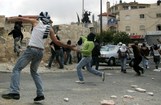
Violent confrontations broke out on Thursday as the Israeli occupation forces (IOF) rolled into Jerusalem’s town of Abu Dis and stormed Palestinian family homes.
Eye-witnesses said the IOF kidnapped the 20-year-old youngster Arafat Hdeidoun from Abu Dis after they broke into his family home, resulting in a wave of confrontations.
The clashes spread out to al-Izriya town, where the IOF showered Palestinian homes and citizens with heavy spates of tear gas canisters.
Earlier, afternoon Wednesday, the IOF stormed the house of Sharif Sharawna in the Old City of Jerusalem and wreaked havoc on the building.
The house owner Um Alaa said the IOF troops summoned her son for interrogation a few days earlier and sent him back home after they threatened to detain him sometime soon.
She said a state of panic overwhelmed her grandchildren, adding that the break-in has not been the only one of its kind as the IOF stormed her family home several times before in search for her wanted son Asid.
Eye-witnesses said the IOF kidnapped the 20-year-old youngster Arafat Hdeidoun from Abu Dis after they broke into his family home, resulting in a wave of confrontations.
The clashes spread out to al-Izriya town, where the IOF showered Palestinian homes and citizens with heavy spates of tear gas canisters.
Earlier, afternoon Wednesday, the IOF stormed the house of Sharif Sharawna in the Old City of Jerusalem and wreaked havoc on the building.
The house owner Um Alaa said the IOF troops summoned her son for interrogation a few days earlier and sent him back home after they threatened to detain him sometime soon.
She said a state of panic overwhelmed her grandchildren, adding that the break-in has not been the only one of its kind as the IOF stormed her family home several times before in search for her wanted son Asid.
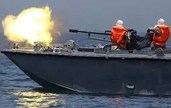
A group of Palestinian fisherman on Wednesday morning came under machinegun fire from the Israeli occupation navy off the coast of the besieged Gaza Strip.
Local sources said that Israeli gunboats opened fire at some fishermen working within the permitted fishing zone off the northern shore of Gaza.
They added the intensity of the gunfire forced the fishermen to return ashore, without stating if anyone suffered injuries in the attack.
Local sources said that Israeli gunboats opened fire at some fishermen working within the permitted fishing zone off the northern shore of Gaza.
They added the intensity of the gunfire forced the fishermen to return ashore, without stating if anyone suffered injuries in the attack.
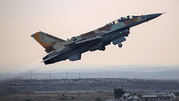
The Israeli Air Force carried out, on
Thursday at dawn, two air strikes targeting sites in the northern and
central parts of the Gaza Strip; the army claims it was responding to a
rocket fired into an area in the Hof Ashkelon Regional Council.
Palestinian sources said the army fired two missiles into the Civil Administration Office, in Jabalia town, in the northern part of the Gaza Strip, causing damage but no casualties.
The army also fired missiles into a site, used by an armed resistance group, in the al-Boreij refugee camp, in central Gaza, causing damage but no casualties.
Israel said the airstrikes came in retaliation to a shell that was allegedly fired from Gaza into the Hof Ashkelon Regional Council, approximately at 2 after midnight.
Israeli Ynet News said the Red Alert sirens were sounded in the Zikim area, certain parts of Ashkelon and the Hof Ashkelon Regional Council, causing no damage or injuries.
It added that the Israeli army held the Hamas movement in Gaza responsible for the attack.
IAF strikes Gaza after rocket fire on Israel
Infrastructure bombed in Gaza close to dawn; code red sirens sound in southern Israel as rocket hits open area; no damage or injuries reported after rocket strike.
The Israeli Air Force attacked an infrastructure target in Gaza early Thursday morning in response to a rocket that was fired from the Palestinian enclave just after 2am local time.
A passerby was lightly hurt in the Gaza Strip, according to residents while none of the organizations known to hold rocket stockpiles in Gaza initially claimed responsibility for the early morning rocket attack on Israel.
The rocket set off code red sirens in Zikim, parts of Ashkelon city and the Hof Ashkelon Regional Council, earning a response from an IDF spokesperson who said Israel holds Hamas responsible for such incidents.
No damage or injuries were reported as a result of the Gazan missile that landed in an open area in the Hof Ashkelon Regional Council. Security forces are still searching the area to find the projectile.
"The IDF considers this incident a severe one," said the IDF spokesperson in announcing the retaliatory attack on Gaza. We won't put up with any attempt to harm Israeli civilians. Hamas is the address of responsibility."
Rocket fire on southern Israel has been on the rise over the past several weeks, including an incident in which ISIS affiliated militants in the Sinai Peninsula fired on Israel.
Israeli air strike hits blockaded Gaza Strip
The Israeli occupation warplanes struck targets in the blockaded Gaza Strip early on Thursday morning
on allegations that a rocket from the coastal territory landed in southern Israel.
Eye-witnesses said the first air strike targeted a resistance site in northern Gaza with spates of rocket fire and another site east of al-Bureij refugee camp, in central Gaza.
No injuries were reported in the raids.
Israeli media outlets claimed the strikes were launched in response to a rocket that struck an open ground near the city of Ashkelon before dawn with no reported damage.
The air strikes are another of Israel’s ongoing violation of the Cairo-brokered ceasefire accord signed with Palestinian resistance factions on August 26.
Activists have accounted for hundreds of Israeli violations in the past 10 months which included limited incursions into Gaza, shootings at farmers and fishermen. Several were injured and a couple murdered.
Palestinian sources said the army fired two missiles into the Civil Administration Office, in Jabalia town, in the northern part of the Gaza Strip, causing damage but no casualties.
The army also fired missiles into a site, used by an armed resistance group, in the al-Boreij refugee camp, in central Gaza, causing damage but no casualties.
Israel said the airstrikes came in retaliation to a shell that was allegedly fired from Gaza into the Hof Ashkelon Regional Council, approximately at 2 after midnight.
Israeli Ynet News said the Red Alert sirens were sounded in the Zikim area, certain parts of Ashkelon and the Hof Ashkelon Regional Council, causing no damage or injuries.
It added that the Israeli army held the Hamas movement in Gaza responsible for the attack.
IAF strikes Gaza after rocket fire on Israel
Infrastructure bombed in Gaza close to dawn; code red sirens sound in southern Israel as rocket hits open area; no damage or injuries reported after rocket strike.
The Israeli Air Force attacked an infrastructure target in Gaza early Thursday morning in response to a rocket that was fired from the Palestinian enclave just after 2am local time.
A passerby was lightly hurt in the Gaza Strip, according to residents while none of the organizations known to hold rocket stockpiles in Gaza initially claimed responsibility for the early morning rocket attack on Israel.
The rocket set off code red sirens in Zikim, parts of Ashkelon city and the Hof Ashkelon Regional Council, earning a response from an IDF spokesperson who said Israel holds Hamas responsible for such incidents.
No damage or injuries were reported as a result of the Gazan missile that landed in an open area in the Hof Ashkelon Regional Council. Security forces are still searching the area to find the projectile.
"The IDF considers this incident a severe one," said the IDF spokesperson in announcing the retaliatory attack on Gaza. We won't put up with any attempt to harm Israeli civilians. Hamas is the address of responsibility."
Rocket fire on southern Israel has been on the rise over the past several weeks, including an incident in which ISIS affiliated militants in the Sinai Peninsula fired on Israel.
Israeli air strike hits blockaded Gaza Strip
The Israeli occupation warplanes struck targets in the blockaded Gaza Strip early on Thursday morning
on allegations that a rocket from the coastal territory landed in southern Israel.
Eye-witnesses said the first air strike targeted a resistance site in northern Gaza with spates of rocket fire and another site east of al-Bureij refugee camp, in central Gaza.
No injuries were reported in the raids.
Israeli media outlets claimed the strikes were launched in response to a rocket that struck an open ground near the city of Ashkelon before dawn with no reported damage.
The air strikes are another of Israel’s ongoing violation of the Cairo-brokered ceasefire accord signed with Palestinian resistance factions on August 26.
Activists have accounted for hundreds of Israeli violations in the past 10 months which included limited incursions into Gaza, shootings at farmers and fishermen. Several were injured and a couple murdered.

Medical sources have reported that two Palestinian teens have been injured, on Wednesday evening, after an Israeli Light Rail guard assaulted them, in Shu’fat village, in the occupied Jerusalem.
The sources said ‘Azmi Nassar Salayma, 18 years of age, and his cousin Marwan Nader Salayma, 16, suffered cuts and bruises to different parts of their bodies.
‘Azmi’s father said the light-rail guard was harassing the two teenagers, before asking them to hand him their Identity Cards, without any cause of justification.
After obtaining the ID cards, the guard refused to return them, and attacked the two as they reached their destination; the guard first attacked Marwan before assaulting his cousin.
The two were later moved to the al-Makassed Islamic Charitable Society Hospital, in Jerusalem, suffering various cuts and bruises.
The father said the police refused to open an investigation, alleging there were no investigators available at the time, although an officer took the statement of the light-rail guard.
The sources said ‘Azmi Nassar Salayma, 18 years of age, and his cousin Marwan Nader Salayma, 16, suffered cuts and bruises to different parts of their bodies.
‘Azmi’s father said the light-rail guard was harassing the two teenagers, before asking them to hand him their Identity Cards, without any cause of justification.
After obtaining the ID cards, the guard refused to return them, and attacked the two as they reached their destination; the guard first attacked Marwan before assaulting his cousin.
The two were later moved to the al-Makassed Islamic Charitable Society Hospital, in Jerusalem, suffering various cuts and bruises.
The father said the police refused to open an investigation, alleging there were no investigators available at the time, although an officer took the statement of the light-rail guard.
